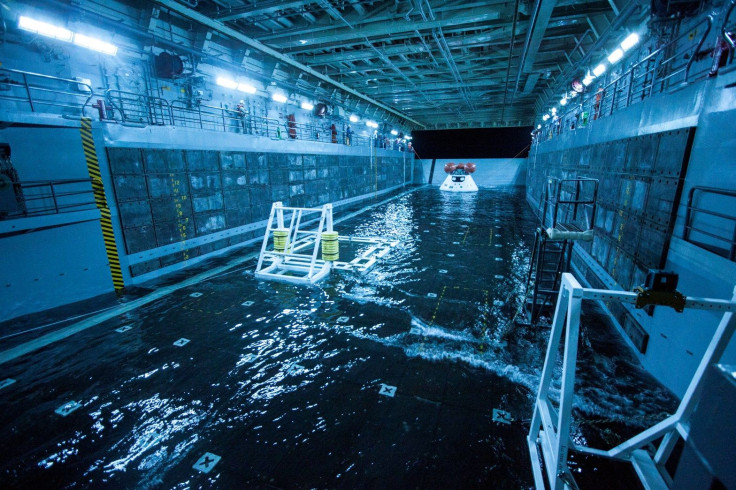NASA Halts Orion Space Capsule Recovery Test After Holding Lines Snap Under Tension

NASA was testing recovery and support methods for the Orion space capsule off the coast of California on Friday but halted the test after having trouble securing the capsule. The U.S. space agency said the problem involved the handling lines as the capsule was unable to handle the tension caused by wave turbulence.
NASA says it and the U.S. Navy were working on a test Orion space capsule recovery mission. The recovery test included towing the capsule back to a warship and securing it in the flooded well deck of the USS San Diego. The Pacific Ocean training mission let NASA and the Navy analyze different procedures, hardware and other aspects necessary for the recovery of a capsule after splashdown.
The Associated Press reports the handling lines snapped due to the tension while in the well deck of the ship ahead of the training mission. Despite the setback, NASA remains optimistic and will continue to test recovery options for its new space capsule. Bill Hill, assistant deputy associate administrator for exploration systems development at NASA, said in a statement, "Even though the testing didn't go as we had planned, we're learning lessons that will help us be better prepared to retrieve Orion after it travels more than 3,600 miles into space and comes home."
NASA did complete several training tasks, including the recovery of the forward bay cover and the capsule's parachute. The space agency has not announced a date for the next Orion recovery test.
The Orion Multiple-Purpose Crew Vehicle is a space capsule that can carry up to six astronauts beyond low Earth orbit and can be used for manned missions to the moon and Mars. NASA has scheduled the Exploration Flight Test-1 for September to evaluate the capsule's general performance, heat shield and other critical systems. The space agency will launch an unmanned Orion space capsule 15 times farther than the International Space Station and the capsule will return to Earth at speeds exceeding 20,000 miles per hour prior to splashdown in the Pacific Ocean.
© Copyright IBTimes 2024. All rights reserved.






















